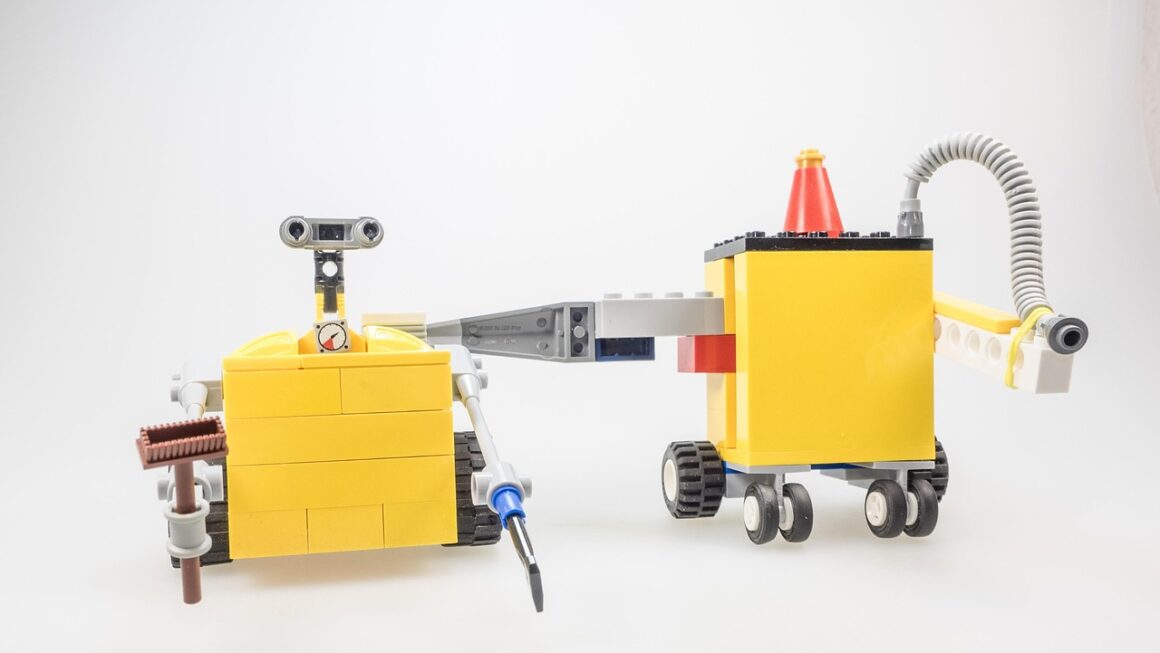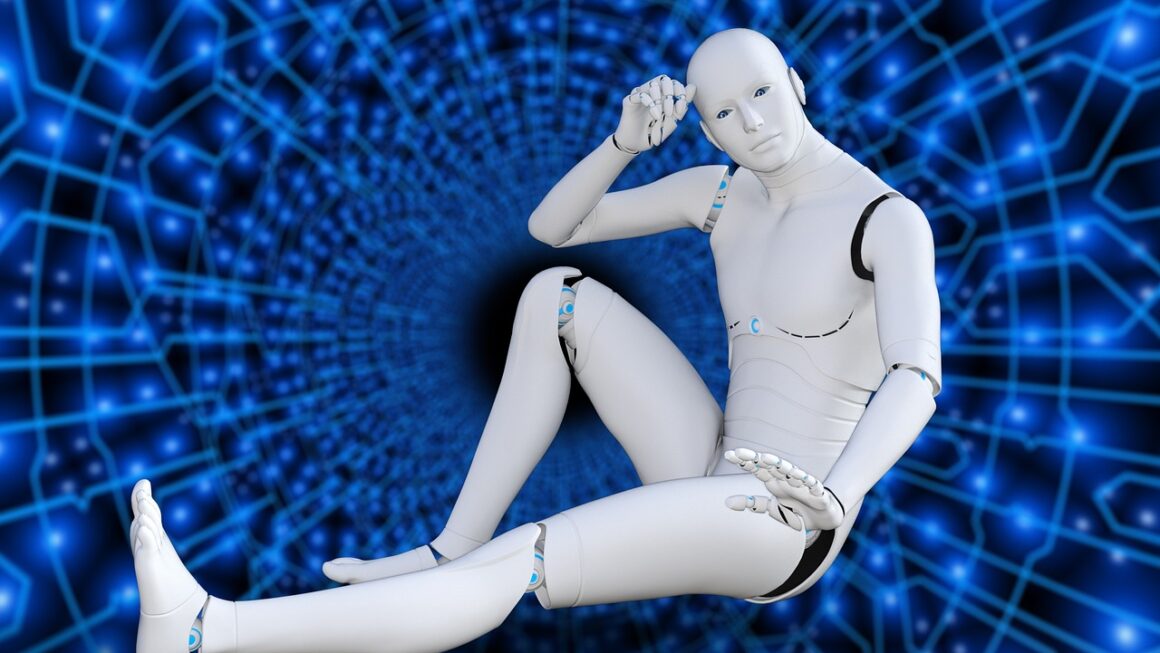The world of content creation is undergoing a seismic shift, driven by the rapid advancements in Artificial Intelligence (AI). From generating initial drafts to optimizing existing content for search engines, AI is no longer a futuristic fantasy but a present-day reality revolutionizing how we create, distribute, and consume information. This article explores the multifaceted applications of AI in content creation, providing insights into its benefits, limitations, and the future of this exciting intersection.
The Rise of AI-Powered Content Creation
What is AI Content Creation?
AI content creation refers to the use of artificial intelligence tools and technologies to automate or assist in the process of generating various forms of content, including text, images, audio, and video. These tools leverage natural language processing (NLP), machine learning (ML), and other AI techniques to understand, analyze, and create content that resembles human-written or human-created material. The sophistication of these tools varies widely, from simple text generators to complex systems capable of creating entire marketing campaigns.
The Driving Forces Behind AI Adoption
The adoption of AI in content creation is being fueled by several key factors:
- Increased Demand for Content: The digital landscape demands a constant stream of fresh, engaging content to maintain audience engagement and improve search engine rankings.
- Need for Efficiency and Speed: AI can significantly accelerate the content creation process, freeing up human writers and marketers to focus on more strategic tasks.
- Cost Reduction: Automating content creation can lead to considerable cost savings, especially for businesses that require large volumes of content.
- Data-Driven Insights: AI tools can analyze vast amounts of data to identify trends, keywords, and topics that resonate with target audiences.
AI Content Creation: A Statistical Snapshot
According to recent industry reports:
- The AI content creation market is projected to reach $30.5 billion by 2028, growing at a CAGR of 25.7% from 2021 (Source: Verified Market Research).
- Over 30% of marketing teams are already using AI for content creation, with plans for further integration in the coming years (Source: HubSpot).
- AI-powered tools can reduce content creation time by up to 50% (Source: Gartner).
How AI is Transforming Content Creation: Use Cases
Text Generation: Beyond Basic Articles
AI text generation is perhaps the most widely recognized application of AI in content creation. Modern AI tools can produce a wide range of written content:
- Blog Posts and Articles: AI can generate initial drafts of blog posts, articles, and news stories based on specified keywords and topics.
Example: Tools like Jasper (formerly Jarvis) and Copy.ai can generate blog introductions, outlines, and even complete articles on various subjects.
Practical Tip: Use AI to create a first draft, then refine and personalize the content with your own expertise and voice.
- Product Descriptions: AI can quickly generate compelling and SEO-optimized product descriptions for e-commerce websites.
Example: Many e-commerce platforms now integrate AI tools to automatically generate product descriptions based on product attributes.
Practical Tip: Provide the AI with detailed product specifications and target audience information to ensure accurate and engaging descriptions.
- Social Media Content: AI can create engaging social media posts, captions, and even schedule content across multiple platforms.
Example: Tools like Buffer and Hootsuite integrate AI features that suggest optimal posting times and generate captions based on trending topics.
Practical Tip: Experiment with different AI-generated captions to see what resonates best with your audience.
- Email Marketing Copy: AI can help write effective email subject lines, body copy, and calls to action to improve email marketing performance.
Example: Persado is an AI platform specifically designed to optimize email marketing copy for increased conversions.
Practical Tip: Use AI to A/B test different email variations and identify the most effective messaging.
Image and Video Creation: Expanding Visual Content Possibilities
AI is also making significant strides in image and video creation:
- AI Image Generators: Tools like DALL-E 2, Midjourney, and Stable Diffusion can generate realistic and imaginative images from text prompts.
Example: Need a unique image for a blog post? Simply enter a text description, and the AI will generate multiple image options.
Practical Tip: Be specific and descriptive in your text prompts to get the best results. Experiment with different styles and artistic influences.
- AI Video Creation: AI can automate the video creation process, from scriptwriting to editing and animation.
Example: Synthesia allows users to create realistic AI avatars and generate videos from text scripts.
Practical Tip: Use AI video creation tools to produce explainer videos, product demos, and marketing videos quickly and cost-effectively.
- Image Enhancement: AI algorithms can improve the quality of existing images by upscaling resolution, removing noise, and enhancing details.
Example: Let’s Enhance is an AI-powered image upscaler that can dramatically improve the quality of low-resolution images.
Practical Tip: Use AI image enhancement tools to optimize images for websites and social media platforms.
Data Analysis and Optimization: Refining Content Strategy
Beyond content generation, AI plays a crucial role in analyzing content performance and optimizing content strategy:
- SEO Optimization: AI can analyze keyword trends, search engine rankings, and competitor content to identify opportunities for SEO improvement.
Example: Surfer SEO and Semrush use AI to analyze search engine results and provide recommendations for optimizing content for specific keywords.
Practical Tip: Use AI-powered SEO tools to identify high-volume, low-competition keywords and incorporate them into your content.
- Audience Insights: AI can analyze user behavior, demographics, and preferences to provide insights into audience interests and needs.
Example: Google Analytics uses AI to identify user segments and predict user behavior, allowing marketers to tailor content to specific audiences.
Practical Tip: Use AI-powered analytics tools to understand your audience and create content that resonates with their interests.
- Content Personalization: AI can personalize content based on individual user preferences and behavior, delivering tailored experiences.
Example: Netflix uses AI to recommend movies and TV shows based on viewing history and ratings.
Practical Tip: Use AI-powered personalization tools to deliver targeted content and improve user engagement.
Benefits of Using AI in Content Creation
Increased Efficiency and Productivity
AI automates repetitive tasks, enabling content creators to focus on strategy and creativity. The ability to quickly generate drafts, conduct research, and optimize content significantly boosts productivity and accelerates the content creation lifecycle.
Improved Content Quality and Consistency
AI can ensure content adheres to specific style guides, tone, and brand guidelines, leading to greater consistency. By analyzing data and identifying trends, AI helps content creators produce higher-quality content that resonates with target audiences and achieves desired outcomes.
Cost Savings
By automating content creation processes, AI reduces the need for manual labor, leading to significant cost savings. Businesses can generate more content with fewer resources, improving their return on investment (ROI) in content marketing efforts.
Enhanced Personalization and Relevance
AI enables content creators to deliver personalized content experiences that cater to individual user preferences and needs. This results in higher engagement rates, increased customer loyalty, and improved conversion rates.
Challenges and Limitations of AI Content Creation
Lack of Creativity and Originality
While AI can generate content based on patterns and data, it often lacks the creativity, originality, and emotional intelligence of human writers. AI-generated content can sometimes sound generic or repetitive, requiring human intervention to add nuance and personality.
Potential for Plagiarism and Copyright Issues
AI tools can inadvertently generate content that infringes on existing copyrights or contains plagiarized material. It is crucial to carefully review and edit AI-generated content to ensure originality and avoid legal issues.
Ethical Considerations and Bias
AI algorithms can perpetuate existing biases present in the data they are trained on, leading to unfair or discriminatory outcomes. It is essential to address biases in AI systems and ensure that AI-generated content is fair, accurate, and unbiased.
Over-Reliance on AI and Loss of Human Skills
Excessive reliance on AI for content creation can lead to a decline in human writing and creative skills. It is important to strike a balance between AI assistance and human input to maintain creativity, originality, and critical thinking.
Conclusion
AI is rapidly transforming the content creation landscape, offering numerous benefits in terms of efficiency, quality, and personalization. While AI tools are not yet capable of completely replacing human writers and creators, they serve as powerful assistants that can augment human capabilities and streamline content creation workflows. As AI technology continues to evolve, it is essential to understand its potential, limitations, and ethical implications to harness its full potential and ensure responsible content creation practices. Embracing AI as a collaborative tool, rather than a replacement for human creativity, will pave the way for a future where content is more engaging, personalized, and effective than ever before.




